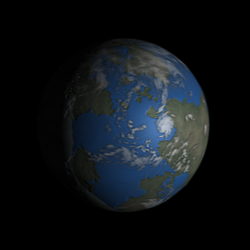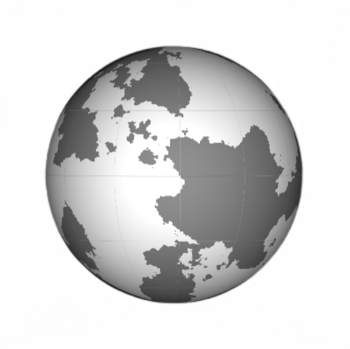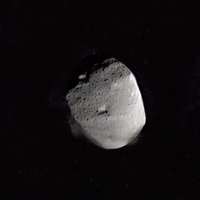Kelera
Kelera photo from orbit and scheme of the day side | |||||||||||||
| Designations | |||||||||||||
|---|---|---|---|---|---|---|---|---|---|---|---|---|---|
| Tau Lanus c, New Terra, The World | |||||||||||||
| Orbital characteristics | |||||||||||||
| 7479893.535 km (4647790.364 mi) (0.05 AU) | |||||||||||||
| Eccentricity | ~0 | ||||||||||||
| 14 d (2.0 weeks) | |||||||||||||
Average orbital speed | 29.78 km/s (18.50 mi/s) | ||||||||||||
| Satellites | Small natural satellit-asteroid: Erebus 500+ operational artificial satellites | ||||||||||||
| Physical characteristics | |||||||||||||
Mean radius | 7946.14 km (4937.50 mi) | ||||||||||||
| Circumference | 49.926 km (31.023 mi) | ||||||||||||
| 793.454.977km2 (306.354.679 mi2) | |||||||||||||
| Volume | 1.08321 × 1012km3 | ||||||||||||
| Mass | 14.4785168 x 1024 lb | ||||||||||||
Mean density | 4,59 g/cm3 | ||||||||||||
| 26.7 ft/s2 (0.83 G with respect to the earth's gravity) | |||||||||||||
| 0.3307 | |||||||||||||
| 11.186 km/s (6.951 mi/s) | |||||||||||||
Sidereal rotation period | ∞ (Tidal locking) | ||||||||||||
Equatorial rotation velocity | 0.4651 km/s (0.2890 mi/s) | ||||||||||||
| 0° | |||||||||||||
| Albedo | 0.367 geometric 0.306 Bond | ||||||||||||
| |||||||||||||
| Atmosphere | |||||||||||||
Surface pressure | 101.325 kPa (at MSL) | ||||||||||||
| Composition by volume | 78.08% nitrogen (N2) (dry air) 20.95% oxygen (O2) 0.930% argon 0.039% carbon dioxide (climate-variable) | ||||||||||||
Kelera, also known as New Terra, or The World, is the second planet from the Star Tau Lanus and makes a revolution around her in 14 days. This is one of the planets colonized by the humanity, and one of the few on which life has been discovered. Life before colonization on the planet was represented by simple microorganisms, algae, fungi and lichens. While large amounts of water can be found throughout the Tau Lanus System, only Kelera sustains liquid surface water. Oceans covers more than half of its crust and contains allmost all of its water. Most other water is retained in on the dark side of the planet large polar sheets of ice, covering ocean and land, dwarfing groundwater, lakes, rivers and atmospheric water. Kelera's atmosphere is radically different from those of the other planets, having been altered by the presence of life to contain 19% free oxygen. The planetary magnetosphere shields the surface from cosmic radiation, limiting atmospheric stripping and maintaining habitability. However, her it one major difference - the planet is tidally locked. As a result, the side constantly facing the star is a massive desert, while the side facing away from the star is a frozen land. However, in-between these extremes, there are rings of habitable areas with different climates depending on how warm they are. Planetary hurricanes regularly take place on the planet, which bring dust from the daytime side, and at other times the sky constantly remains pinkish or yellow-orange. Kelera has small natural satellit-asteroid named Erebus.
Satellit-asteroid Erebus
| As seen by Erebus from Kelera | |
| Diameter | 22.2 km |
| Mass | 10.7×1015 kg |
| Semi-major axis | 9,377 km |
| Orbital period | 7h 43.7m |
Kelera has one relatively small (compared to Earth's) natural moon, Erebus or Kelera 1 (about 22 kilometres (14 mi) in diameter), which orbit close to the planet. The origin of moon is unclear, although a popular theory states that were asteroid captured into Kelerian orbit. Erebus is a small, irregularly shaped object with a mean radius of 15 km (9,3 mi). Erebus orbits 6,000 km (3,700 mi) from the Kelerian surface, closer to its primary body than any other known planetary moon. From the surface of Kelera, the motions of Erebus appear different from that of the Earth's satellite, the Moon. Erebus rises in the west, sets in the east, and rises again in just 11 hours. Because the orbit of Erebus is below synchronous altitude, tidal forces from Kelera are gradually lowering its orbit. In about 50 million years, it could either crash into Kelera's surface or break up into a ring structure around the planet. If viewed from Kelera's surface near its equator, full Erebus looks about one-third as big as a full moon on Earth. Thus there are no total solar eclipses on Kelera, as the moon are far too small to completely cover the Sun.



